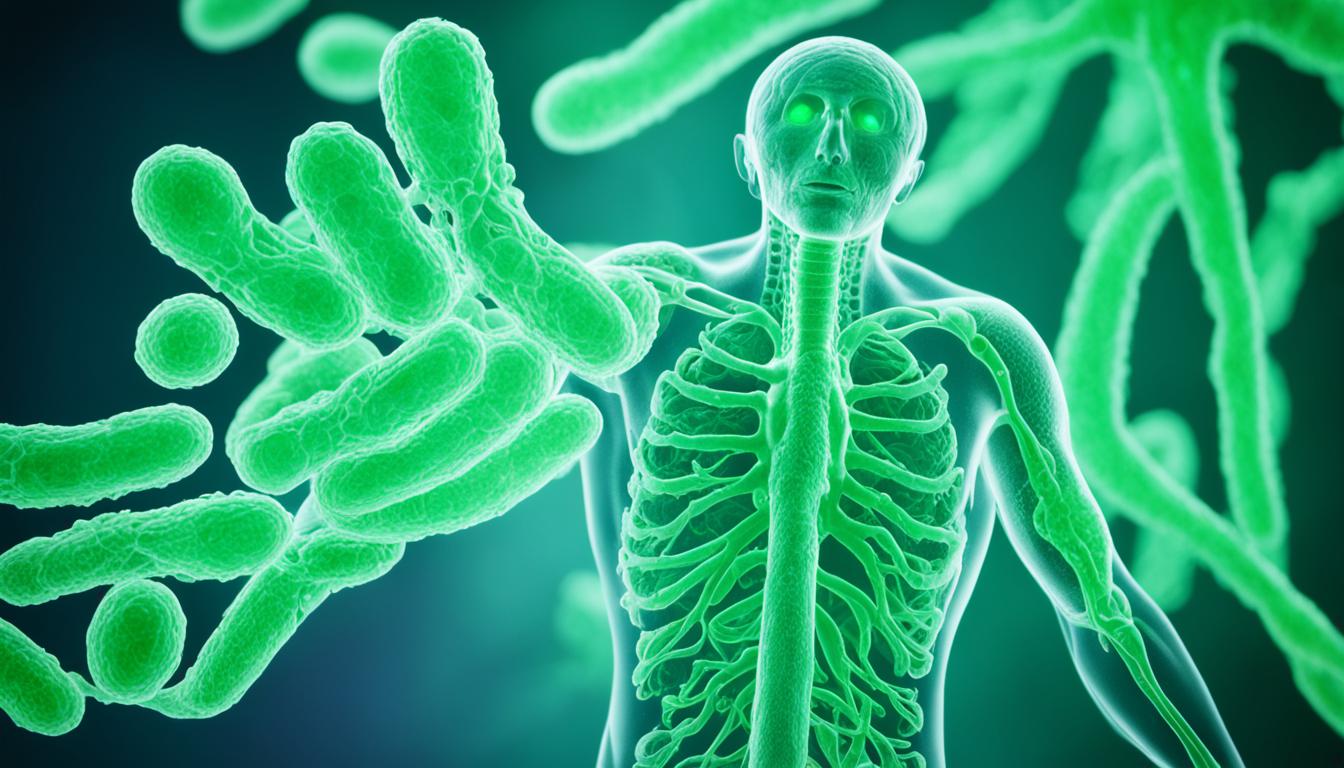Multiple endocrine neoplasia type 1 (MEN1) is a rare inherited disorder. It affects various endocrine glands. These glands include the parathyroid, pancreatic, and adrenal glands, among others. It’s caused by changes in a gene called MEN1. These changes cause tumors to form in the affected glands.
Diagnosing MEN1 includes clinical checks, genetic tests, and imaging. Genetic tests find MEN1 mutations and assess tumor risks. Regular check-ups are crucial for finding and treating tumors early.
For MEN1 tumors, surgery is often needed as the main treatment. But, there’s exciting research into stem cell therapy. This therapy might help repair or replace damaged endocrine glands. Countries like Thailand have advanced in regenerative medicine, offering hope to MEN1 patients.
- Multiple endocrine neoplasia type 1 (MEN1) is a rare inherited disorder characterized by the development of tumors in multiple endocrine glands.
- MEN1 is caused by mutations in the MEN1 tumor suppressor gene.
- Diagnosis involves a combination of clinical evaluation, genetic testing, and imaging studies.
- Treatment options for MEN1 depend on the specific tumor types and may include surgery, medical management, and surveillance.
- Stem cell therapy is a potential treatment option being explored for MEN1, offering the possibility of regenerating damaged endocrine glands.
Key Takeaways:
Clinical Manifestations of MEN1
MEN1 is a complex genetic disorder. It leads to tumors in the endocrine glands. These include the parathyroid, pancreatic, pituitary, adrenal glands, and others. The tumors elsewhere can vary, and their types change from person to person.
Endocrine Tumors
The key tumor in MEN1 is parathyroid adenomas, seen in about 90% of cases. These can cause too much calcium in the blood. Pancreatic islet cell tumors come next, affecting 40-70% of patients. They make hormones like insulin and can lead to different symptoms.
Pituitary adenomas also appear in around 30-50% of people with MEN1. They may mess with hormones and press on nearby areas. Adrenal tumors are less common in MEN1, as are neuroendocrine carcinoid tumors in places like the lung and thymus.
Non-Endocrine Manifestations
MEN1 might not just show up in the endocrine glands. It can also cause skin and fatty tumors. These non-endocrine issues might help doctors spot MEN1.
The symptoms of MEN1 can be different for everyone. Doctors typically diagnose it if a patient has certain tumors or a family history. Spotting and treating these issues is very important for those with MEN1.
Continue reading to learn more about the diagnosis and management of MEN1.
Diagnosis and Management of MEN1
Diagnosing Multiple endocrine neoplasia type 1 (MEN1) combines clinical checks, genetic tests, and images. Spotting MEN1 gene changes helps find who might have the disease. It’s important to keep checking these people for MEN1-related growths.
If someone has MEN1, doctors look for certain types of tumors. They might do surgery and use medicines like somatostatin to help. Keeping a close eye on the person’s health is crucial. This way, doctors can see if a tumor comes back or if they need to change the treatment.
Periodical Monitoring and Mutation Analysis
Getting regular health checks is key to handling MEN1. Experts in endocrine neoplasia work with you to do these checks. They include blood tests and scans to watch for any new tumors.
Genetic testing can show if someone could get MEN1. This is done by testing their blood or other tissues. It helps spot who else in the family might have or could get MEN1.
Surgical Options and Medical Management
Surgery is often the main way to treat MEN1 tumors. For example, the most common type, parathyroid adenomas, is treated with surgery. This surgery removes the part of the parathyroid that’s causing the problem.
Tumors in the pancreas that make too much of certain hormones also need surgery. This helps with symptoms and lowers the risk of more tumors. The goal is to improve how the patient feels and lives.
For tumors that make too much hormone but can’t be cut out, medicines like octreotide can help. These drugs reduce hormone levels and slow down tumor growth.
Common MEN1-associated Tumors and Treatment Options
| Tumor Type | Treatment Options |
|---|---|
| Parathyroid adenomas | Surgical removal (parathyroidectomy) |
| Pancreatic islet cell tumors (insulinomas, gastrinomas, etc.) | Surgical removal, medical management (somatostatin analogues) |
| Pituitary adenomas | Surgical removal, radiation therapy, medical management (medications) |
| Adrenal tumors | Surgical removal, observation, medical management (adrenal hormone replacement) |
| Neuroendocrine carcinoid tumors | Surgical removal, medical management (somatostatin analogues) |
Seeing your specialist for regular check-ups is vital. It lets them track how your treatment is working and make any needed changes. They watch your hormones, tumor size, and how you respond to the treatment.
Stem Cell Therapy for MEN1 in Thailand
Stem cell therapy shows promise for treating MEN1 in Thailand. It uses stem cells to repair damaged tissues and organs. For MEN1, it aims to help endocrine glands damaged by tumors heal.
Research and trials are looking into how safe and helpful stem cell therapy is for MEN1. Thailand is a leader in regenerative medicine. This makes it a good option for those looking for new ways to treat MEN1.
But, more studies are needed to be sure about stem cell therapy’s benefits for MEN1. No treatment is without risks. So, it’s crucial to have a specialist in regenerative medicine guide you.

